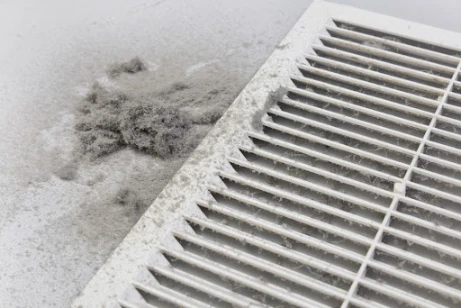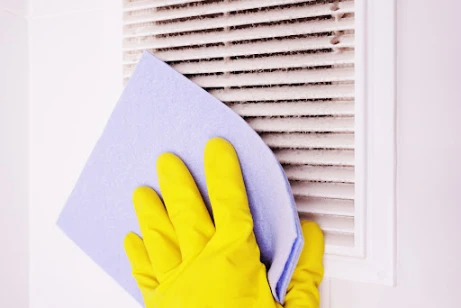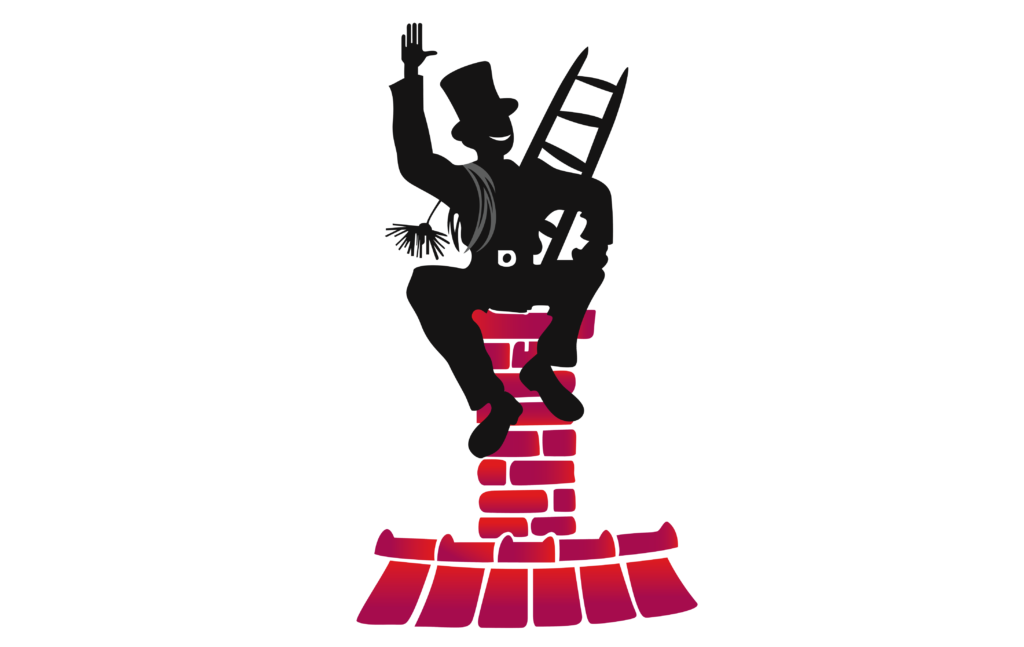Does Air Duct Cleaning Make a Mess?

system. This meticulous source removal not only improves indoor air quality but also enhances the overall efficiency and performance of your HVAC system.
Sanitization and Deodorization: In certain cases, professionals may offer additional services such as sanitization and deodorization. These supplementary treatments go beyond mere cleaning, targeting bacteria, mold, fungi, and other microbial contaminants that may be present within the air ducts. By employing specialized sanitizing agents and deodorizers, professionals can effectively eliminate these harmful elements, thus promoting a healthier indoor environment. This process also helps combat unpleasant odors, leaving your home smelling fresh and clean.
Potential Sources of Mess during Air Duct Cleaning
While air duct cleaning aims to minimize mess, it is important to acknowledge that certain factors can contribute to temporary disturbance. These factors can include:
Dust and Debris Dislodgement: During the cleaning process, dislodged dust and debris have the potential to become airborne. Despite the use of high-powered vacuums, it is possible for some particles to escape into the surrounding area temporarily. This can result in a minor amount of dust or debris being present during the cleaning process.

Loose Vent Covers: When the vent covers are removed for cleaning, it exposes accumulated dust and debris that may have built up over time. Without proper control, these contaminants can fall to the ground or nearby surfaces, potentially causing a temporary mess. It is crucial to handle the vent covers carefully to prevent the spread of dust and debris.
Access Points: Thoroughly cleaning the air ducts may require the creation of access points by making small openings in the ductwork. Although necessary for effective cleaning, this process can generate minimal debris. While professionals make efforts to minimize any mess associated with access point creation, a small amount of debris may be present during the cleaning process.
It is important to note that professional expertise and precautions play a vital role in mitigating these potential sources of mess. Experienced technicians utilize effective containment strategies and follow industry best practices to minimize any temporary disturbance. By employing specialized equipment and techniques, they strive to ensure that the overall cleanliness of the surrounding area is maintained during and after the air duct cleaning process.
Containment Measures to Minimize Mess
Professional air duct cleaners employ a range of effective measures to minimize mess and ensure a clean and controlled environment during the cleaning process. These comprehensive containment strategies are designed to protect your furniture, flooring, and other belongings, while also preventing the spread of dust, debris, and contaminants. Some of the key techniques utilized by these experts include:
Protective Covers: Prior to commencing the cleaning procedure, diligent technicians utilize protective covers to safeguard your furniture, flooring, and other valuable items. These covers act as a robust barrier, shielding your belongings from potential dust and debris, thereby preventing any contamination.
High-Powered Vacuums: Recognizing the specific requirements of air duct cleaning, professional cleaners employ high-powered vacuum systems. These specialized vacuums boast exceptional suction capabilities, enabling them to effectively capture and contain dislodged dust and debris. By minimizing the spread of particles, these vacuums play a crucial role in reducing mess.
HEPA Filtration: Air duct cleaning equipment frequently incorporates the use of HEPA (High-Efficiency Particulate Air) filters. These advanced filters are renowned for their remarkable efficiency in capturing even the smallest particles, including allergens and microscopic contaminants. By effectively trapping these particles, HEPA filtration ensures that they are not released into the air during the cleaning process, contributing to a cleaner and healthier environment.
Negative Air Pressure: To further enhance containment, technicians may employ negative air pressure techniques. By creating a negative pressure within the ductwork, any dislodged particles are immediately drawn into the powerful vacuum system. This additional measure significantly reduces the chances of mess by directing the particles directly into containment, preventing their dispersion.
Containment Devices: In specific cases, professionals may utilize containment devices such as inflatable plugs or barriers. These devices are strategically employed to isolate particular sections of the ductwork, effectively controlling the flow of contaminants. By preventing the spread of dust and debris to other areas of the house, these containment devices contribute to a cleaner and more controlled environment.
Factors Affecting the Mess Level
The extent of mess during air duct cleaning can vary significantly due to several factors that play a role in the process. These factors have an impact on the level of mess experienced, and they include the following:
Condition of the Ductwork: The state of the air ducts prior to cleaning is a crucial factor. If the ducts have not been cleaned for a prolonged period, they are likely to contain a substantial amount of dust, dirt, and debris. Consequently, cleaning highly contaminated ductwork may result in a slightly higher level of mess during the cleaning process.
Amount of Debris Present: The quantity of debris accumulated within the ductwork directly influences the mess level during cleaning. The more debris present, the higher the chances of temporary disturbance and mess as the cleaning process dislodges and removes the accumulated particles.

Access Points and System Design: The location, accessibility, and design of the air duct system can significantly impact the mess level. Duct systems that are easily accessible and have well-designed layouts are generally easier to clean with minimal mess. Conversely, systems that have limited access points or complex designs may pose challenges during the cleaning process, potentially leading to a higher mess level.
Common Misconceptions
When it comes to air duct cleaning and the potential mess it may create, there are several misconceptions that need to be addressed. It is crucial to separate fact from fiction in order to provide a clearer understanding of the process. Let’s take a closer look at some of the common misconceptions surrounding air duct cleaning:
Air Ducts Always Get Messy: It is true that air ducts can accumulate dust and debris over time, but it is important to note that not all cleaning processes result in a significant mess. By employing proper containment measures and relying on professional expertise, the potential mess can be effectively minimized. Experienced technicians are equipped with techniques that help contain any dust or debris during the cleaning process, ensuring a cleaner and more organized experience.
Airborne Dust and Debris: During the air duct cleaning process, there might be a temporary disturbance that creates the perception of increased dust in the air. However, professional containment methods are in place to counter this. Powerful vacuums and HEPA filtration systems are utilized to prevent the spread of dust and debris beyond the immediate work area. These measures ensure that the air quality in your home remains unaffected and that any temporary disturbance is swiftly addressed.
DIY vs. Professional Cleaning: One common misconception is that do-it-yourself (DIY) air duct cleaning can be as effective as professional cleaning. However, this is not the case. Without the appropriate equipment, expertise, and containment strategies, attempting to clean air ducts on your own may result in a mess and fail to deliver the same level of cleanliness and air quality improvement. Professionals are trained to handle the complexities of air duct cleaning, and they have the necessary tools and knowledge to ensure a thorough and efficient job.
By understanding and dispelling these misconceptions, homeowners can make more informed decisions about the necessity of professional air duct cleaning and the potential mess associated with it. If you’re looking for reliable and hassle-free air duct cleaning services, consider reaching out to Duct Pro Cleaning. Our experienced technicians are equipped with the necessary expertise, advanced equipment, and containment strategies to ensure a thorough and efficient cleaning process, while minimizing any potential mess.
Benefits of Professional Air Duct Cleaning
Professional air duct cleaning offers several advantages that go beyond just reducing mess. Here are some key benefits:
Improved Indoor Air Quality: Air ducts can accumulate dust, allergens, pet dander, and other contaminants over time. Professional cleaning removes these pollutants, resulting in cleaner and healthier indoor air. This is especially beneficial for individuals with respiratory conditions or allergies.
Enhanced Energy Efficiency: When air ducts are clogged with debris, the HVAC system has to work harder to distribute air effectively. By cleaning the ducts, airflow is improved, which can lead to increased energy efficiency and lower utility bills.
Odor Reduction: Lingering unpleasant odors in the home can be caused by trapped pollutants in the air ducts. Professional cleaning can eliminate these odors, leaving your home smelling fresh and clean.

Extended HVAC System Lifespan: Regular air duct cleaning helps prevent the build-up of debris that can cause strain on the HVAC system. By reducing the workload, the system can operate more efficiently, potentially prolonging its lifespan.
Removal of Mold and Mildew: If moisture is present in the air ducts, it can create an environment conducive to mold and mildew growth. Professional cleaners can identify and remove any mold or mildew, helping to maintain a healthier indoor environment.
FAQ: Does Air Duct Cleaning Make a Mess?
During the cleaning process, some dust and debris may become temporarily airborne, but professional cleaners take precautions to minimize the spread. Advanced containment measures and powerful vacuums with HEPA filters help capture and contain the particles, reducing the overall mess.
Professional cleaners use protective covers and containment strategies to prevent dust and debris from spreading. While there may be some temporary disturbance, your home should not get excessively dirty during the cleaning process.
DIY air duct cleaning is not recommended. Without proper equipment and expertise, you may not achieve thorough cleaning and could potentially create a bigger mess. Professional cleaners have the necessary tools and knowledge to clean the ducts effectively while minimizing any mess.
The frequency of air duct cleaning depends on various factors such as the level of contaminants, the presence of allergies or respiratory conditions, and the overall indoor air quality. As a general guideline, it is recommended to have air ducts professionally cleaned every 3 to 5 years, but individual circumstances may vary.
In conclusion, regular cleaning and maintenance of gas fireplace chimneys are crucial for a safe and functional heating system. By prioritizing chimney maintenance, you can enjoy the warmth and comfort of your gas fireplace while ensuring the well-being of your household. Remember, a well-maintained chimney not only enhances the performance of your gas fireplace but also provides peace of mind for you and your loved ones.

